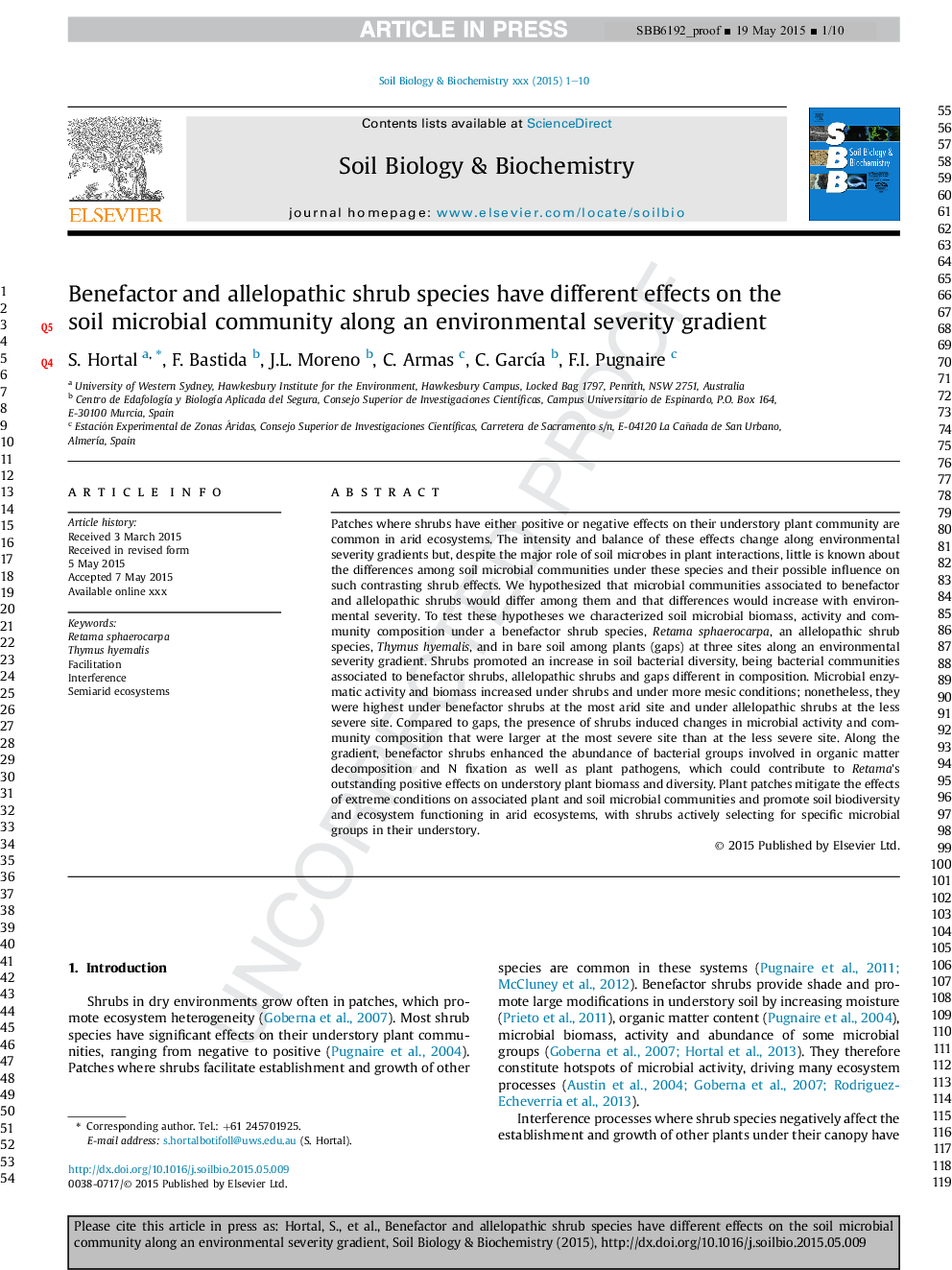| کد مقاله | کد نشریه | سال انتشار | مقاله انگلیسی | نسخه تمام متن |
|---|---|---|---|---|
| 8363908 | 1542596 | 2015 | 10 صفحه PDF | دانلود رایگان |
عنوان انگلیسی مقاله ISI
Benefactor and allelopathic shrub species have different effects on the soil microbial community along an environmental severity gradient
ترجمه فارسی عنوان
گونه های مزرعه دار و آلوپاتیک بوته دارای اثرات متفاوتی بر جامعه میکرب خاک در طی یک گرادیان شدت محیط زیست
دانلود مقاله + سفارش ترجمه
دانلود مقاله ISI انگلیسی
رایگان برای ایرانیان
کلمات کلیدی
موضوعات مرتبط
علوم زیستی و بیوفناوری
علوم کشاورزی و بیولوژیک
دانش خاک شناسی
چکیده انگلیسی
Patches where shrubs have either positive or negative effects on their understory plant community are common in arid ecosystems. The intensity and balance of these effects change along environmental severity gradients but, despite the major role of soil microbes in plant interactions, little is known about the differences among soil microbial communities under these species and their possible influence on such contrasting shrub effects. We hypothesized that microbial communities associated to benefactor and allelopathic shrubs would differ among them and that differences would increase with environmental severity. To test these hypotheses we characterized soil microbial biomass, activity and community composition under a benefactor shrub species, Retama sphaerocarpa, an allelopathic shrub species, Thymus hyemalis, and in bare soil among plants (gaps) at three sites along an environmental severity gradient. Shrubs promoted an increase in soil bacterial diversity, being bacterial communities associated to benefactor shrubs, allelopathic shrubs and gaps different in composition. Microbial enzymatic activity and biomass increased under shrubs and under more mesic conditions; nonetheless, they were highest under benefactor shrubs at the most arid site and under allelopathic shrubs at the less severe site. Compared to gaps, the presence of shrubs induced changes in microbial activity and community composition that were larger at the most severe site than at the less severe site. Along the gradient, benefactor shrubs enhanced the abundance of bacterial groups involved in organic matter decomposition and N fixation as well as plant pathogens, which could contribute to Retama's outstanding positive effects on understory plant biomass and diversity. Plant patches mitigate the effects of extreme conditions on associated plant and soil microbial communities and promote soil biodiversity and ecosystem functioning in arid ecosystems, with shrubs actively selecting for specific microbial groups in their understory.
ناشر
Database: Elsevier - ScienceDirect (ساینس دایرکت)
Journal: Soil Biology and Biochemistry - Volume 88, September 2015, Pages 48-57
Journal: Soil Biology and Biochemistry - Volume 88, September 2015, Pages 48-57
نویسندگان
S. Hortal, F. Bastida, J.L. Moreno, C. Armas, C. GarcÃa, F.I. Pugnaire,
